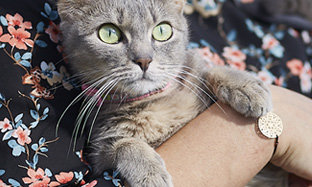
Chronic renal failure in cats: how to know if my cat is infected and how to treat him?
Chronic kidney disease is a slowly progressive and irreversible disease. It results in a reduction in kidney functionality. Up to 20% of cats can be affected by this disease. It is one of the most common diseases in cats.
Causes of chronic kidney disease are numerous. You must note that in most cases, the origin of the onset of this disease will remain unknown. Some cats may be at risk. The best-known example is the Persian breed cat, which may have a genetic predisposition to kidney disease called “polycystic kidney disease”.
Chronic kidney disease can lead to kidney failure. It mainly affects cats over 8 years old. Clinical signs may be a loss of appetite, weight loss, increased drinking, increased urine emission.
If your cat shows these signs, consult your with your vet to establish a diagnosis. Your vet may need to do additional tests such as taking blood or urine samples.
It is also possible to monitor the functioning of the kidneys by making regular blood tests on an older cat. This way, the diagnosis will be early for a management from the beginning stage.
Chronic kidney disease cannot be cured. Management aims to slow the evolution for the cat to live longer.
The vet will prescribe products according to the stage of the disease. Regular monitoring will be necessary for therapeutic adjustment. In other words, the kidney is no longer able to regulate the concentration of phosphorus in the blood. It is therefore necessary to limit the intake of dietary phosphorus as much as possible.

